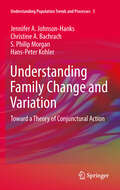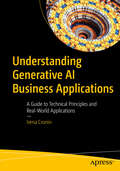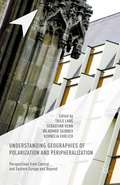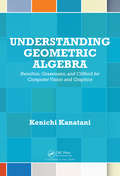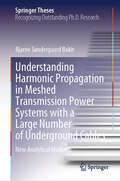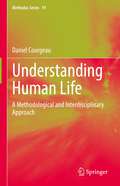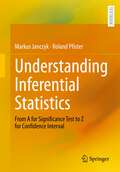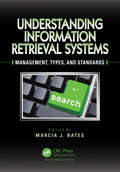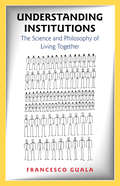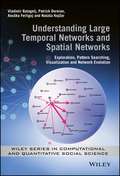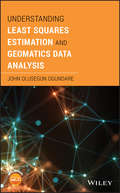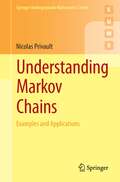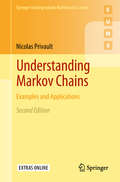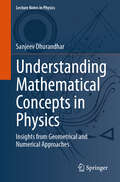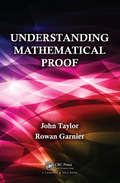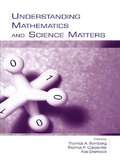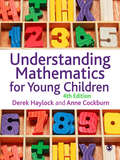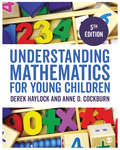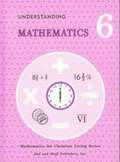- Table View
- List View
Understanding Family Change and Variation
by Hans-Peter Kohler Pamela Smock Christine A. Bachrach Lynette Hoelter S. Philip Morgan Rosalind King Jennifer A. Johnson-HanksFertility rates vary considerably across and within societies, and over time. Over the last three decades, social demographers have made remarkable progress in documenting these axes of variation, but theoretical models to explain family change and variation have lagged behind. At the same time, our sister disciplines--from cultural anthropology to social psychology to cognitive science and beyond--have made dramatic strides in understanding how social action works, and how bodies, brains, cultural contexts, and structural conditions are coordinated in that process. Understanding Family Change and Variation: Toward a Theory of Conjunctural Action argues that social demography must be reintegrated into the core of theory and research about the processes and mechanisms of social action, and proposes a framework through which that reintegration can occur. This framework posits that material and schematic structures profoundly shape the occurrence, frequency, and context of the vital events that constitute the object of social demography. Fertility and family behaviors are best understood as a function not just of individual traits, but of the structured contexts in which behavior occurs. This approach upends many assumptions in social demography, encouraging demographers to embrace the endogeneity of social life and to move beyond fruitless debates of structure versus culture, of agency versus structure, or of biology versus society.
Understanding General Deterrence
by Stephen L. QuackenbushThis book bridges the divide between formal and quantitative studies of deterrence by empirically testing and extending perfect deterrence theory. The author focuses on general deterrence, which relates to managing relations between states at all times, not only during crises.
Understanding Generative AI Business Applications: A Guide to Technical Principles and Real-World Applications
by Irena CroninThis guide covers the fundamental technical principles and various business applications of Generative AI for planning, developing, and evaluating AI-driven products. It equips you with the knowledge you need to harness the potential of Generative AI for enhancing business creativity and productivity.The book is organized into three sections: text-based, senses-based, and rationale-based. Each section provides an in-depth exploration of the specific methods and applications of Generative AI. In the text-based section, you will find detailed discussions on designing algorithms to automate and enhance written communication, including insights into the technical aspects of transformer-based Natural Language Processing (NLP) and chatbot architecture, such as GPT-4, Claude 2, Google Bard, and others. The senses-based section offers a glimpse into the algorithms and data structures that underpin visual, auditory, and multisensory experiences, including NeRF, 3D Gaussian Splatting,Stable Diffusion, AR and VR technologies, and more. The rationale-based section illuminates the decision-making capabilities of AI, with a focus on machine learning and data analytics techniques that empower applications such as simulation models, agents, and autonomous systems.In summary, this book serves as a guide for those seeking to navigate the dynamic landscape of Generative AI. Whether you’re a seasoned AI professional or a business leader looking to harness the power of creative automation, these pages offer a roadmap to leverage Generative AI for your organization’s success.What You Will LearnWhat are the technical elements that constitute the makeup of Generative AI products?What are the practical applications of Generative AI?How can algorithms be designed to automate and improve written communication?What are the latest Generative AI architectures and algorithms?Who This Book Is ForData scientists, data analysts, decision makers, and business executives interested in gaining an understanding of Generative AI products
Understanding Geographies of Polarization and Peripheralization: Perspectives from Central and Eastern Europe and Beyond (New Geographies of Europe)
by Thilo Lang Sebastian Henn Wladimir Sgibnev Kornelia EhrlichThis book presents a multifaceted perspective on regional development and corresponding processes of adaptation and response, focusing on the concepts of polarization and peripheralization. It discusses theoretical and empirical foundations and presents several compelling case studies from Central and Eastern Europe and beyond.
Understanding Geometric Algebra: Hamilton, Grassmann, and Clifford for Computer Vision and Graphics
by Kenichi KanataniUnderstanding Geometric Algebra: Hamilton, Grassmann, and Clifford for Computer Vision and Graphics introduces geometric algebra with an emphasis on the background mathematics of Hamilton, Grassmann, and Clifford. It shows how to describe and compute geometry for 3D modeling applications in computer graphics and computer vision.Unlike similar texts
Understanding German Real Estate Markets
by Wolfgang Maennig Tobias JustReal estate is the biggest real asset class in an economy, and Germany is the biggest economy in Europe. This implies opportunities as well as specific risks for investors and policy makers. As the German real estate markets have by and large been spared severe disruptions in the course of the economic crisis, many questions arise for investors and academics alike. What are the key institutional characteristics of the German real estate markets that make it different? What are the short and long-term drivers of demand and supply? Which regional and functional market segments are most likely to outperform in the next few years? What are the most important pitfalls for investors in Germany? This book gives answers to these and many more questions. The editors have invited a broad range of extensively knowledgeable practitioners and academics from across the relevant real estate spectrum, i.e. economic, legal, tax, planning and financing issues, to express their views. There is no better English publication that gives such a profound and simultaneously entertaining overview of Germany's real estate markets.
Understanding German Real Estate Markets (Management for Professionals)
by Tobias Just and Wolfgang MaennigReal estate is the biggest real asset class in an economy, and Germany is the biggest economy in Europe. This implies opportunities as well as specific risks for investors and policy makers. As the German real estate markets have by and large been spared severe disruptions in the course of the economic crisis, many questions arise for investors and academics alike. What are the key institutional characteristics of the German real estate markets that make it different? What are the short and long-term drivers of demand and supply? Which regional and functional market segments are most likely to outperform in the next few years? What are the most important pitfalls for investors in Germany? This book gives answers to these and many more questions. The editors have invited a broad range of extensively knowledgeable practitioners and academics from across the relevant real estate spectrum, i.e. economic, legal, tax, planning and financing issues, to express their views. There is no better English publication that gives such a profound and simultaneously entertaining overview of Germany’s real estate markets.
Understanding Harmonic Propagation in Meshed Transmission Power Systems with a Large Number of Underground Cables: New Analytical Methods (Springer Theses)
by Bjarne Søndergaard BukhThis outstanding PhD thesis reports on new analytical methods developed to analyse harmonic propagation in large transmission systems. The focus is on understanding the physical relationships between harmonic propagation phenomena in the passive grid caused by grid expansions or changes to existing transmission lines. Principal component analysis and partial least squares regression have been used as tools to investigate statistical correlations between harmonic distortion levels at substations, and a harmonic propagation model based on standing wave phenomena and techniques known from radio and microwave theory has been developed. Knowledge of the propagation phenomena has also been used to develop a new method for determining appropriate locations for harmonic mitigating equipment in a grid. Finally, the methods have been validated through both simulation models and harmonic voltage measurements obtained from the Danish transmission grid. Overall, this thesis reports new insights into harmonic propagation in power systems as the use of underground cables increases and offers new tools for analysing such phenomena. No previous examples of data-driven analyses of measurement data from a power system in the form presented here could be found in existing literature, thus paving a way to new possibilities for this emerging field.
Understanding Human Life: A Methodological and Interdisciplinary Approach (Methodos Series #19)
by Daniel CourgeauThis book addresses the challenge of understanding human life. It compares our life experience with the attempts to grasp it by astrologers, eugenicists, psychologists, neuroscientists, social scientists, and philosophers. The main opposition among these specialties lies between understanding and misunderstanding. The book also addresses the central methodological difficulty of capturing a human life. It is first examined how certain approaches may lead to a misunderstanding of human life. The book contrasts the example of astrology—an accepted practice in ancient civilizations, but now classified among the pseudosciences—with astronomy, a full-fledged science since Galileo’s time. Another, more recent approach regards human life as predetermined by genes: the methods used by eugenicists, and later by political regimes under the name of hereditarianism, came to compete with genetics. A broader analysis shows how astrology and eugenicism are not truly scientific approaches. Next, the book looks at the ways of capturing an imaginary or real human life story. A comprehensive approach will try to fully understand their complexity, while a more explanatory approach considers only certain specific phenomena of human life. For example, demography studies only births, deaths, and migration. Another crucial factor in the collection of life histories is memory and its transmission. Psychology and psychoanalysis have developed different schools to try to explain them. The book concludes with a detailed discussion of the concepts and tools that have been proposed in more recent times for understanding the various aspects of life stories: mechanisms, systems, hermeneutics, and autonomy.
Understanding Inferential Statistics: From A for Significance Test to Z for Confidence Interval
by Markus Janczyk Roland PfisterWhat does this p-value actually mean? And what is a significant result? This book provides a compact and comprehension-oriented introduction to inferential statistics and answers questions like these. One focus is on the logic underlying inferential statistics and hypothesis testing: Readers learn the most commonly used procedures (t-test, analysis of variance with and without repeated measures, correlation/regression) as well as the pitfalls of data analysis, and develop the understanding necessary to interpret results correctly. The individual chapters are supplemented by concrete evaluation examples from everyday research - including exemplary implementation with the programs SPSS and R. In addition to the classic methods, cross-references to current developments in psychological methodological research are also included.This book is a translation of the original German 3rd edition of Inferenzstatistik verstehen by Markus Janczyk and Roland Pfister. The translation was done with the help of artificial intelligence (machine translation by the service DeepL.com). A subsequent human revision was done primarily in terms of content, so that the book will read stylistically differently from a conventional translation.
Understanding Information Retrieval Systems: Management, Types, and Standards
by Marcia J. BatesIn order to be effective for their users, information retrieval (IR) systems should be adapted to the specific needs of particular environments. The huge and growing array of types of information retrieval systems in use today is on display in Understanding Information Retrieval Systems: Management, Types, and Standards, which addresses over 20 typ
Understanding Institutions: The Science and Philosophy of Living Together
by Francesco GualaUnderstanding Institutions proposes a new unified theory of social institutions that combines the best insights of philosophers and social scientists who have written on this topic. Francesco Guala presents a theory that combines the features of three influential views of institutions: as equilibria of strategic games, as regulative rules, and as constitutive rules.Guala explains key institutions like money, private property, and marriage, and develops a much-needed unification of equilibrium- and rules-based approaches. Although he uses game theory concepts, the theory is presented in a simple, clear style that is accessible to a wide audience of scholars working in different fields. Outlining and discussing various implications of the unified theory, Guala addresses venerable issues such as reflexivity, realism, Verstehen, and fallibilism in the social sciences. He also critically analyses the theory of "looping effects" and "interactive kinds" defended by Ian Hacking, and asks whether it is possible to draw a demarcation between social and natural science using the criteria of causal and ontological dependence. Focusing on current debates about the definition of marriage, Guala shows how these abstract philosophical issues have important practical and political consequences. Moving beyond specific cases to general models and principles, Understanding Institutions offers new perspectives on what institutions are, how they work, and what they can do for us.
Understanding Large Temporal Networks and Spatial Networks
by Vladimir Batagelj Natasa Kejzar Anuska Ferligoj Patrick DoreianThis book explores social mechanisms that drive network change and link them to computationally sound models of changing structure to detect patterns. This text identifies the social processes generating these networks and how networks have evolved.
Understanding Least Squares Estimation and Geomatics Data Analysis
by John Olusegun OgundareProvides a modern approach to least squares estimation and data analysis for undergraduate land surveying and geomatics programs Rich in theory and concepts, this comprehensive book on least square estimation and data analysis provides examples that are designed to help students extend their knowledge to solving more practical problems. The sample problems are accompanied by suggested solutions, and are challenging, yet easy enough to manually work through using simple computing devices, and chapter objectives provide an overview of the material contained in each section. Understanding Least Squares Estimation and Geomatics Data Analysis begins with an explanation of survey observables, observations, and their stochastic properties. It reviews matrix structure and construction and explains the needs for adjustment. Next, it discusses analysis and error propagation of survey observations, including the application of heuristic rule for covariance propagation. Then, the important elements of statistical distributions commonly used in geomatics are discussed. Main topics of the book include: concepts of datum definitions; the formulation and linearization of parametric, conditional and general model equations involving typical geomatics observables; geomatics problems; least squares adjustments of parametric, conditional and general models; confidence region estimation; problems of network design and pre-analysis; three-dimensional geodetic network adjustment; nuisance parameter elimination and the sequential least squares adjustment; post-adjustment data analysis and reliability; the problems of datum; mathematical filtering and prediction; an introduction to least squares collocation and the kriging methods; and more. Contains ample concepts/theory and content, as well as practical and workable examples Based on the author's manual, which he developed as a complete and comprehensive book for his Adjustment of Surveying Measurements and Special Topics in Adjustments courses Provides geomatics undergraduates and geomatics professionals with required foundational knowledge An excellent companion to Precision Surveying: The Principles and Geomatics Practice Understanding Least Squares Estimation and Geomatics Data Analysis is recommended for undergraduates studying geomatics, and will benefit many readers from a variety of geomatics backgrounds, including practicing surveyors/engineers who are interested in least squares estimation and data analysis, geomatics researchers, and software developers for geomatics.
Understanding Machine Learning
by Shai Shalev-Shwartz Shai Ben-DavidMachine learning is one of the fastest growing areas of computer science, with far-reaching applications. The aim of this textbook is to introduce machine learning, and the algorithmic paradigms it offers, in a principled way. The book provides a theoretical account of the fundamentals underlying machine learning and the mathematical derivations that transform these principles into practical algorithms. Following a presentation of the basics, the book covers a wide array of central topics unaddressed by previous textbooks. These include a discussion of the computational complexity of learning and the concepts of convexity and stability; important algorithmic paradigms including stochastic gradient descent, neural networks, and structured output learning; and emerging theoretical concepts such as the PAC-Bayes approach and compression-based bounds. Designed for advanced undergraduates or beginning graduates, the text makes the fundamentals and algorithms of machine learning accessible to students and non-expert readers in statistics, computer science, mathematics and engineering.
Understanding Maple
by Ian ThompsonMaple is a powerful symbolic computation system that is widely used in universities around the world. This short introduction gives readers an insight into the rules that control how the system works, and how to understand, fix, and avoid common problems. Topics covered include algebra, calculus, linear algebra, graphics, programming, and procedures. Each chapter contains numerous illustrative examples, using mathematics that does not extend beyond first-year undergraduate material. Maple worksheets containing these examples are available for download from the author's personal website. The book is suitable for new users, but where advanced topics are central to understanding Maple they are tackled head-on. Many concepts which are absent from introductory books and manuals are described in detail. With this book, students, teachers and researchers will gain a solid understanding of Maple and how to use it to solve complex mathematical problems in a simple and efficient way.
Understanding Markov Chains: Examples and Applications
by Nicolas PrivaultThis book provides an undergraduate introduction to discrete and continuous-time Markov chains and their applications. A large focus is placed on the first step analysis technique and its applications to average hitting times and ruin probabilities. Classical topics such as recurrence and transience, stationary and limiting distributions, as well as branching processes, are also covered. Two major examples (gambling processes and random walks) are treated in detail from the beginning, before the general theory itself is presented in the subsequent chapters. An introduction to discrete-time martingales and their relation to ruin probabilities and mean exit times is also provided, and the book includes a chapter on spatial Poisson processes with some recent results on moment identities and deviation inequalities for Poisson stochastic integrals. The concepts presented are illustrated by examples and by 72 exercises and their complete solutions.
Understanding Markov Chains: Examples and Applications (Springer Undergraduate Mathematics Series)
by Nicolas PrivaultThis book provides an undergraduate-level introduction to discrete and continuous-time Markov chains and their applications, with a particular focus on the first step analysis technique and its applications to average hitting times and ruin probabilities. It also discusses classical topics such as recurrence and transience, stationary and limiting distributions, as well as branching processes. It first examines in detail two important examples (gambling processes and random walks) before presenting the general theory itself in the subsequent chapters. It also provides an introduction to discrete-time martingales and their relation to ruin probabilities and mean exit times, together with a chapter on spatial Poisson processes. The concepts presented are illustrated by examples, 138 exercises and 9 problems with their solutions.
Understanding Mathematical Concepts in Physics: Insights from Geometrical and Numerical Approaches (Lecture Notes in Physics #1030)
by Sanjeev DhurandharModern mathematics has become an essential part of today’s physicist’s arsenal and this book covers several relevant such topics. The primary aim of this book is to present key mathematical concepts in an intuitive way with the help of geometrical and numerical methods - understanding is the key. Not all differential equations can be solved with standard techniques. Examples illustrate how geometrical insights and numerical methods are useful in understanding differential equations in general but are indispensable when extracting relevant information from equations that do not yield to standard methods. Adopting a numerical approach to complex analysis it is shown that Cauchy’s theorem, the Cauchy integral formula, the residue theorem, etc. can be verified by performing hands-on computations with Python codes. Figures elucidate the concept of poles and essential singularities. Further the book covers topology, Hilbert spaces, Fourier transforms (discussing how fast Fourier transform works), modern differential geometry, Lie groups and Lie algebras, probability and useful probability distributions, and statistical detection of signals. Novel features include: (i) Topology is introduced via the notion of continuity on the real line which then naturally leads to topological spaces. (ii) Data analysis in a differential geometric framework and a general description of χ2 discriminators in terms of vector bundles. This book is targeted at physics graduate students and at theoretical (and possibly experimental) physicists. Apart from research students, this book is also useful to active physicists in their research and teaching.
Understanding Mathematical Proof
by John Taylor Rowan GarnierThe notion of proof is central to mathematics yet it is one of the most difficult aspects of the subject to teach and master. In particular, undergraduate mathematics students often experience difficulties in understanding and constructing proofs.Understanding Mathematical Proof describes the nature of mathematical proof, explores the various techn
Understanding Mathematics and Science Matters (Studies in Mathematical Thinking and Learning Series)
by Thomas A. Romberg, Thomas P. Carpenter and Fae DremockThe research reported in this book provides reliable evidence on and knowledge about mathematics and science instruction that emphasizes student understanding--instruction consistent with the needs of students who will be citizens in an increasingly demanding technological world.The National Center for Improving Student Learning in Mathematics and Science--established in 1996 as a research center and funded by the U.S. Department of Education--was instrumental in developing instructional practices supportive of high student achievement in and understanding of mathematics and science concepts. NCISLA researchers worked with teachers, students, and administrators to construct learning environments that exemplify current research and theory about effective learning of mathematics and science. The careful programs of research conducted examined how instructional content and design, assessment, professional development, and organizational support can be designed, implemented, and orchestrated to support the learning of all students. This book presents a summary of the concepts, findings, and conclusions of the Center's research from 1996-2001.In the Introduction, the chapters in Understanding Mathematics and Science Matters are situated in terms of the reform movement in school mathematics and school science. Three thematically structured sections focus on, respectively, research directed toward what is involved when students learn mathematics and science with understanding; research on the role of teachers and the problems they face when attempting to teach their students mathematics and science with understanding; and a collaboration among some of the contributors to this volume to gather information about classroom assessment practices and organizational support for reform.The goal of this book is to help educational practitioners, policymakers, and the general public to see the validity of the reform recommendations, understand the recommended guidelines, and to use these to transform teaching and learning of mathematics and science in U.S. classrooms.
Understanding Mathematics for Young Children
by Derek Haylock Anne CockburnIf you are a teacher or student teacher in a nursery or primary school, you need a secure understanding of the mathematical ideas behind the material you will use in the classroom. To help young children develop their understanding of mathematics, you need to develop your own understanding of how mathematics is learnt. <P><P> In this indispensible book, the authors help you to understand mathematical concepts and how children come to understand them, and also help develop your own confidence with mathematical activities. <P> Each chapter of this book includes:<P> - Real-life examples and illustrations from children and teachers in the classroom <P> - The research behind some of the concepts and teaching approaches discussed <P> - Pauses to reflect and discuss your own mathematical knowledge and experience <P> - Age-appropriate classroom activities to try with your class or group.
Understanding Mathematics for Young Children: A Guide for Teachers of Children 3-7
by Derek Haylock Professor Anne CockburnHaving a deep understanding of the mathematical ideas and concepts taught in the classroom is vital as a nursery or primary school teacher. In order for children to get to grips with these concepts, trainee teachers need to be aware of how they come to interpret and understand them. Now in its 5th edition, this essential book helps trainee teachers develop their own knowledge of key mathematical ideas and concepts for the nursery and primary classroom. Now focusing specifically on ages 3-7, it also supports trainees with several age-appropriate classroom activities. As well as updates to further reading suggestions and research focuses, this revised edition includes new content on: Mastery in learning mathematics Simple fractions Roman numerals Money as a form of measurement
Understanding Mathematics for Young Children: A Guide for Teachers of Children 3-7
by Derek Haylock Professor Anne CockburnHaving a deep understanding of the mathematical ideas and concepts taught in the classroom is vital as a nursery or primary school teacher. In order for children to get to grips with these concepts, trainee teachers need to be aware of how they come to interpret and understand them. Now in its 5th edition, this essential book helps trainee teachers develop their own knowledge of key mathematical ideas and concepts for the nursery and primary classroom. Now focusing specifically on ages 3-7, it also supports trainees with several age-appropriate classroom activities. As well as updates to further reading suggestions and research focuses, this revised edition includes new content on: Mastery in learning mathematics Simple fractions Roman numerals Money as a form of measurement
Understanding Mathematics: Grade 6
by Inc. Rod Staff PublishersNew concepts are taught in the following areas. Numbers, Fractions, Decimals, Percents, Measures, Geometry, and Graphs.
